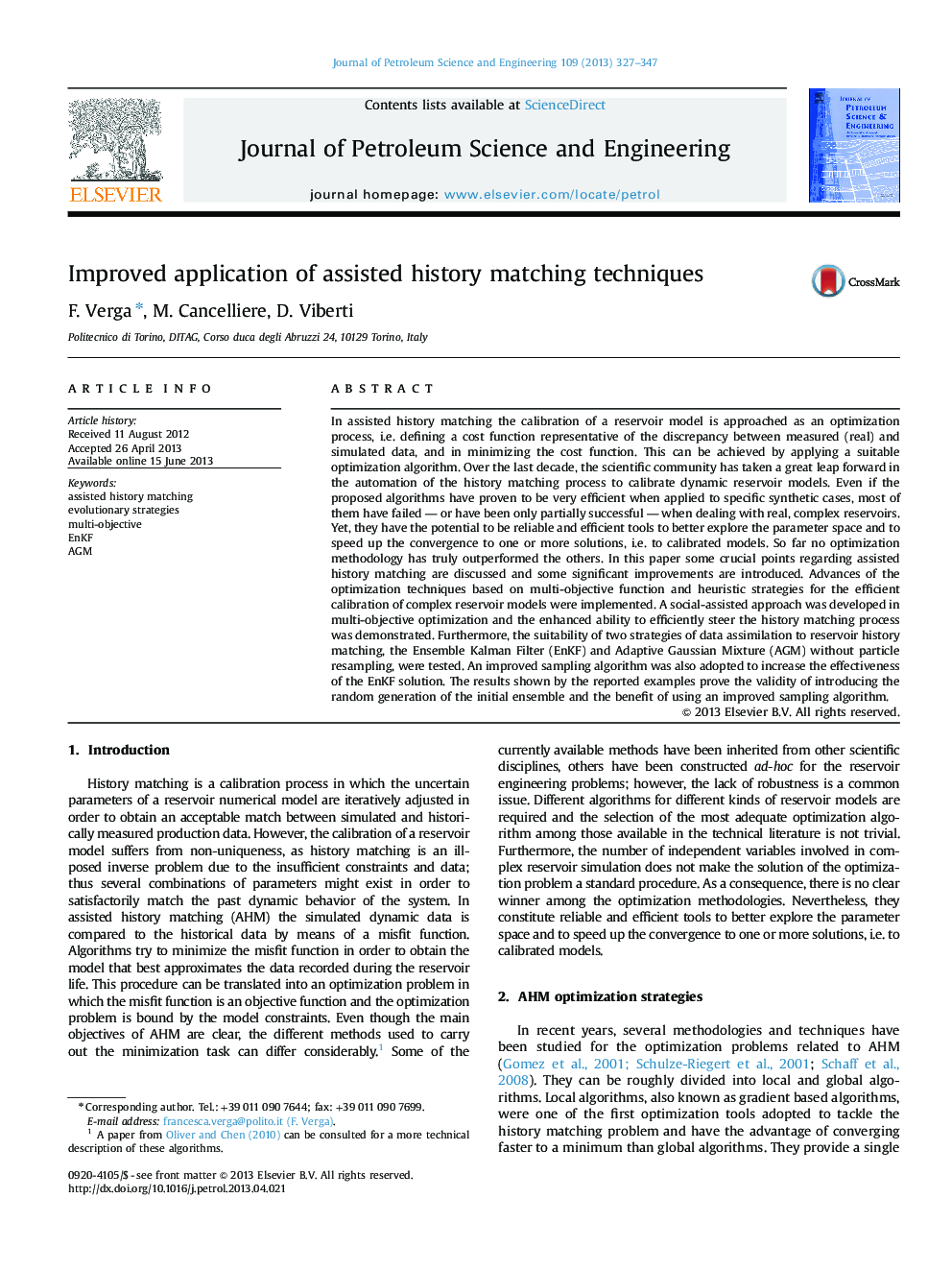| Article ID | Journal | Published Year | Pages | File Type |
|---|---|---|---|---|
| 1755283 | Journal of Petroleum Science and Engineering | 2013 | 21 Pages |
•Discussion of critical points about assisted history matching.•Application of different data assimilation and optimization techniques.•Introduction of user interaction with the optimization algorithm.•Application of AGM for assigning petrophysical properties in model calibration.•Reduction of forecast uncertainty through multiple matched reservoir models.
In assisted history matching the calibration of a reservoir model is approached as an optimization process, i.e. defining a cost function representative of the discrepancy between measured (real) and simulated data, and in minimizing the cost function. This can be achieved by applying a suitable optimization algorithm. Over the last decade, the scientific community has taken a great leap forward in the automation of the history matching process to calibrate dynamic reservoir models. Even if the proposed algorithms have proven to be very efficient when applied to specific synthetic cases, most of them have failed — or have been only partially successful — when dealing with real, complex reservoirs. Yet, they have the potential to be reliable and efficient tools to better explore the parameter space and to speed up the convergence to one or more solutions, i.e. to calibrated models. So far no optimization methodology has truly outperformed the others. In this paper some crucial points regarding assisted history matching are discussed and some significant improvements are introduced. Advances of the optimization techniques based on multi-objective function and heuristic strategies for the efficient calibration of complex reservoir models were implemented. A social-assisted approach was developed in multi-objective optimization and the enhanced ability to efficiently steer the history matching process was demonstrated. Furthermore, the suitability of two strategies of data assimilation to reservoir history matching, the Ensemble Kalman Filter (EnKF) and Adaptive Gaussian Mixture (AGM) without particle resampling, were tested. An improved sampling algorithm was also adopted to increase the effectiveness of the EnKF solution. The results shown by the reported examples prove the validity of introducing the random generation of the initial ensemble and the benefit of using an improved sampling algorithm.
